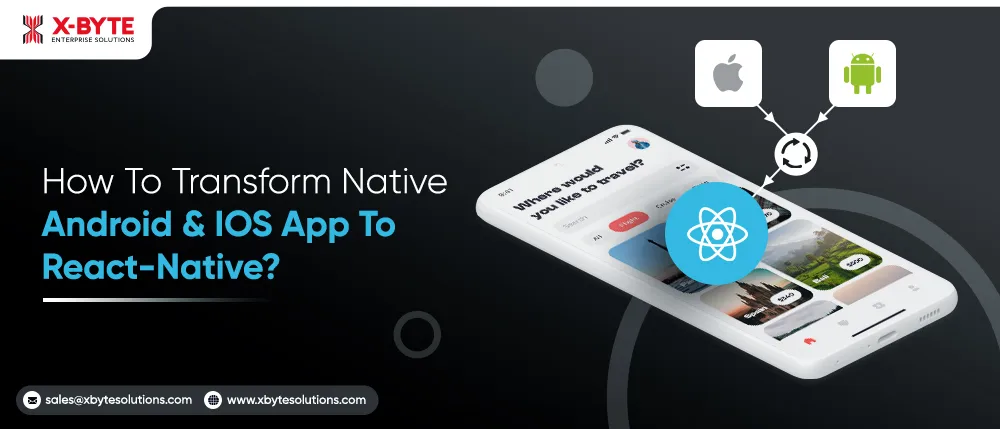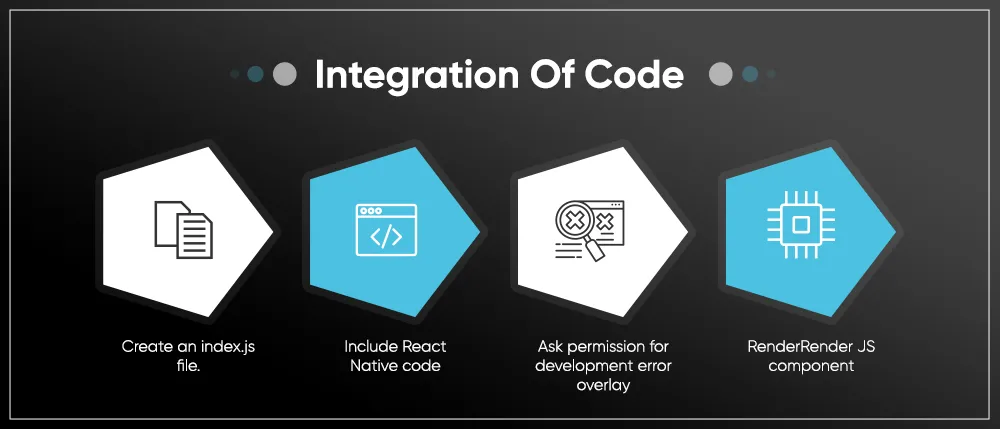
React Native is the most preferred language of developers. Undoubtedly, a lot of developers use JavaScript, but expert developers use its elements to accelerate development speed. Still, people prefer apps developed using native programming languages as they are powerful. Similarly, converting an iOS app or native Android Application to React-Native can help you get the app developed faster.
What is React Native?
Well, React Native is utilized to build native applications. React Native developers use native Android & iOS features to build mobile UIs having declarative components in place of web components. React Native works just like React. The only difference is that in place of Virtual DOM, it utilizes native views to manage DOM.
Why use React Native?
In case you already possess a native Android app, it is easy to convert a Native Android Application to React-Native module without building a React Native app.
React Native apps offer a perfect solution in many cases. You can convert an Android or IOS app to React-Native to save a lot of time.
How To Transform Android or iOS App in React Native?
It is a simple process that helps you convert iOS orNative Android Application to React-Native
Let us have a look at the steps that help convert Android or IOS application to React-Native
Configure Maven
Maven needs to be configured and for that, you need to add React Native & Javascript elements to the library build.gradle file.
Make sure you include an entry for JavaScript maven directories & React Native to ‘allprojects’. Remember, double-check the final path at this stage itself.
Activate native modules auto-linking
To initiate auto-linking, you have to create an entry to – settings.gradle. After this add that entry to – app/build.gradle.
Configure the permissions
Check if you have Internet permission. It can be checked in – AndroidManifest.xml. In case the user flow demands you can access – DevSettingActivity, and add this activity to – AndroidManifest.xml.
ClearText Traffic
In case the Android version you are using is higher than 9, you will find cleartext traffic to be disabled.
It will stop your application from linking to Metro builder. You can use the code – “userCleartextTraffic” to “AndroidManifest.xml” to enable the connection
Integration Of Code

The process of integrating code needs the developer to follow the steps given below:
- Create an index.js file.
- Include React Native code
- Ask permission for development error overlay
- RenderRender JS component
As a default process dev menu will be enabled except in emulators. Here, you need to use ctrl + M to implement JavaScript code for testing.
Testing
At this stage, we need to test the conversion to make sure that the React Native app is operating as expected. You can use Metro builder to build – index.bundle.
Benefits Of Using A React Native For Your Native Android And iOS App
Everyone needs a scalable, functional, and user-friendly app to beat the sharp competition. Hence, cross-platform app development is trending to meet the needs of app development.
React Native is the ideal framework for conversion of Android or IOS apps as it offers a secure and efficient app. Also, the app development process can be performed. The benefits of React Native that you will get after the conversion are
Higher Performance
When it comes to the performance of React Native, it makes use of distinct threads via Native applications and UI. React Native gets connected to the OS easily and generates the code required for native API.
Reusability Of Components
Reusability is among the vital features of React Native which helps developers convert IOS app to React-Nativeas it reduces the time take for overall development for the developers. It is because the developers just need to replicate the components.
Interestingly, all the execution of the Native framework can be performed by just reusing the codes irrespective of the OS
Live Reloading
React Native owns 2 main features
- Live reloading
- Hot reloading
These features allow you to check the outcome by simply running the code and reduce the wait times needed for alterations before making the app live.
Excellent Community Support

As React Native is an open-source framework, the developers find it easy to work with. With their experience, they also share tips and tricks in the community to help others find solutions to their queries. It offers excellent community support for others to learn more about React native and execute practically.
In case you cannot spare time to interview or research the best software development company to convert your existing Android or iOS application to React Native, then X-Byte Enterprise solution can assist you to get a fully functional Reactive Native app after conversion. Connect with us to share your requirements.
Conclusion
React Native is one of the popular frameworks that saves time and costs. Hence, it is the ideal framework that delivers high-performing and robust apps.
It means with the conversions you would be able to get an app that is faster, robust, and efficient. If you think the conversion of iOS Native Android Application to React-Nativeis quite technical for you or you don’t have enough time to carry out this conversion, you can seek help from dedicated mobile app developers. You can also get faster market times with a dedicated mobile app development team. Also, you don’t need to hire a separate QA team to test the app, if you collaborate with the software development team.


